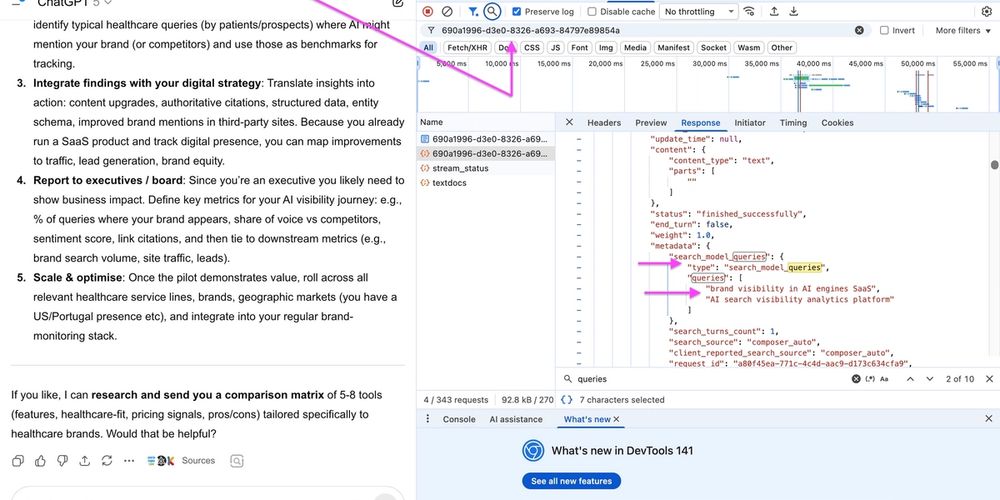How to know what ChatGPT Is searching for with Fan-Out Queries
If you’ve ever asked ChatGPT a question and noticed that it shows you a list of sources, that means it went out to search the web. It probably used Google or Bing, found a few pages that matched your question, and then brought that information back to give you an answer.
So what’s actually going on here? ChatGPT takes your prompt, turns it into a search term, and sends that query to a search engine before writing its response.
Now, if you work in marketing, SEO, or AEO, this is something worth paying attention to. Because if you can understand which queries ChatGPT is sending to Google or Bing, you can start optimizing your content around those exact search terms. That’s how you improve your chances of being cited or showing up in ChatGPT answers.
Let’s go through it step by step.
Step 1: Trigger ChatGPT’s Web Search Mode
Start by opening ChatGPT and typing something that will make it search the web. In my case, I asked:
“I’m a healthcare executive looking for a solution that can help me better understand my brand’s visibility in AI engines.”
When ChatGPT gives you an answer that includes a list of sources, that means it’s using the web search mode. You’ll often see it reference a few websites, and that’s your clue that it’s pulling data from Google or Bing.
Step 2: Inspect What ChatGPT Is Sending
Once you know it’s using the web search mode, the next step is to see exactly what it’s sending out.
Here’s how to do that:
- At the top of your ChatGPT window, copy the conversation number in the URL.
- Right-click anywhere on the page and select Inspect.
- Click on the Network tab.
- Refresh the page.
- Look for a JSON file in the list that appears.
- Click on it, then go to the Response tab.
- Use Ctrl + F to search for the word “queries.”
You’ll then be able to see the exact queries ChatGPT sent to Google or Bing.


Step 3: Read the Queries
Inside the JSON file, look for something that says “search_model_queries.” Under that, you’ll see the actual search terms that ChatGPT used.
In my example, ChatGPT searched for:
“brand visibility in AI engines SaaS” “AI search visibility analytics platform”
It used those search terms to pull information from the web, and then built the answer you see in the chat window.
Why knowing fan-out queries matters
Once you can see what ChatGPT is searching for, you’ll know exactly which keywords to focus on when optimizing your content. This gives you a clearer understanding of how your brand can show up in AI-generated answers, not just traditional search results.
It’s one of those small but powerful insights that a lot of people overlook. Knowing what prompts and queries AI systems are using helps you position your brand where it matters most — inside the answers themselves.
This approach connects directly with AEO, or Answer Engine Optimization. The idea is that as more people turn to AI chatbots instead of Google searches, understanding how these systems find and reference your content becomes just as important as ranking on page one of search results.
How does ChatGPT search the internet
ChatGPT searches the internet by sending out fan-out queries to either Google’s or Bing’s search engines.
The method we talked about explains how you can extract and identify these fan-out queries, giving you a big advantage for your SEO and AI SEO strategy. When you know what queries ChatGPT sends to Google or Bing, you can adjust your content to align with them. It’s one of the easiest ways to start optimizing for both SEO and AI visibility at the same time. We’ve been testing this ourselves, and it’s been a game changer for understanding how AI engines source and prioritize information.
P.S. We've made a 4-minute video about this entire process, with a step-by-step walkthrough too.
